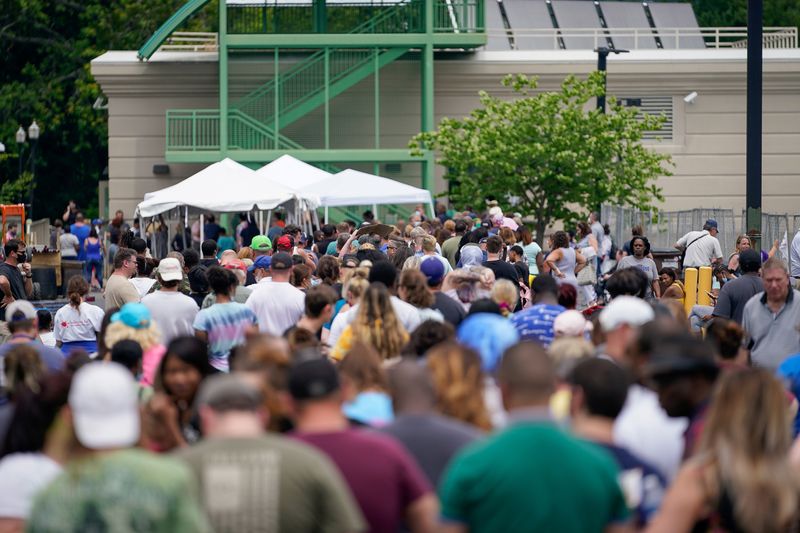U.S. weekly jobless claims fall; second-quarter GDP unrevised
2022.09.29 09:42
[ad_1]

© Reuters. Thousands line up outside a temporary unemployment office established by the Kentucky Labor Cabinet at the State Capitol Annex in Frankfort, Kentucky, U.S. June 17, 2020. REUTERS/Bryan Woolston
WASHINGTON (Reuters) – The number of Americans filing new claims for unemployment benefits unexpectedly fell last week as the labor market remains resilient despite rising headwinds from the Federal Reserve’s stiff interest rate increases and slowing demand.
Initial claims for state unemployment benefits dropped 16,000 to a seasonally adjusted 193,000 for the week ended Sept. 24, the Labor Department said on Thursday. Data for the prior week was revised to show 4,000 fewer applications filed than previously reported. Economists polled by Reuters had forecast 215,000 applications for the latest week.
While there have been reports of some companies laying off workers, claims have remained at the lower end of their 168,000-252,000 range for this year. Economists say most employers are hoarding workers after experiencing difficulties hiring in the past year as the COVID-19 pandemic forced some people out of the workforce, in part because of prolonged illness caused by the virus.
They expect companies to pull back on hiring before resorting to widespread job cuts.
The U.S. central bank last week raised its policy interest rate by 75 basis points, its third straight increase of that size, and signaled more large increases to come this year. Since March, the Fed has hiked its policy rate from near zero to the current range of 3.00% to 3.25%.
There were 11.2 million job openings at the end of July, with two jobs for every unemployed person.
The claims report showed the number of people receiving benefits after an initial week of aid fell 29,000 to 1.347 million in the week ending Sept. 17. The so-called continuing claims data, a proxy for hiring, covered the week that the government surveyed households for August’s unemployment rate.
Continuing claims fell between the July and August survey periods. The jobless rate rose to 3.7% in August from 3.5% in July. The Fed last week raised its median forecast for the unemployment rate this year to 3.8% from its previous projection of 3.7% in June. It boosted its estimate for 2023 to 4.4% from the 3.9% projected in June.
The strong labor market is helping to keep the economy afloat. While a separate report from the Commerce Department on Thursday confirmed that the economy contracted in the first half of this year, it is not in recession, with the income side of the growth ledger expanding moderately.
Gross domestic product fell at an unrevised 0.6% annualized rate last quarter, the government said in its third estimate of GDP. The economy contracted at a 1.6% rate in the first quarter.
The government also revised GDP data from the fourth quarter of 2016 through the fourth quarter of 2021, which showed the economy’s recovery from the COVID-19 pandemic was much stronger than initially thought.
The revisions also showed the gap between GDP and the other economic growth measure, gross domestic income (GDI), was far much smaller than initially thought in 2021.
[ad_2]
Source link








